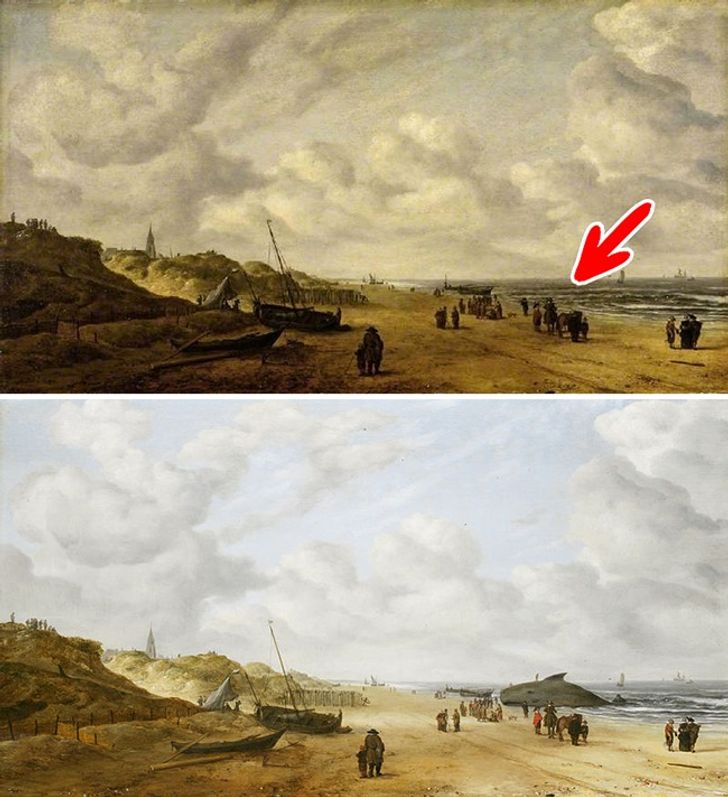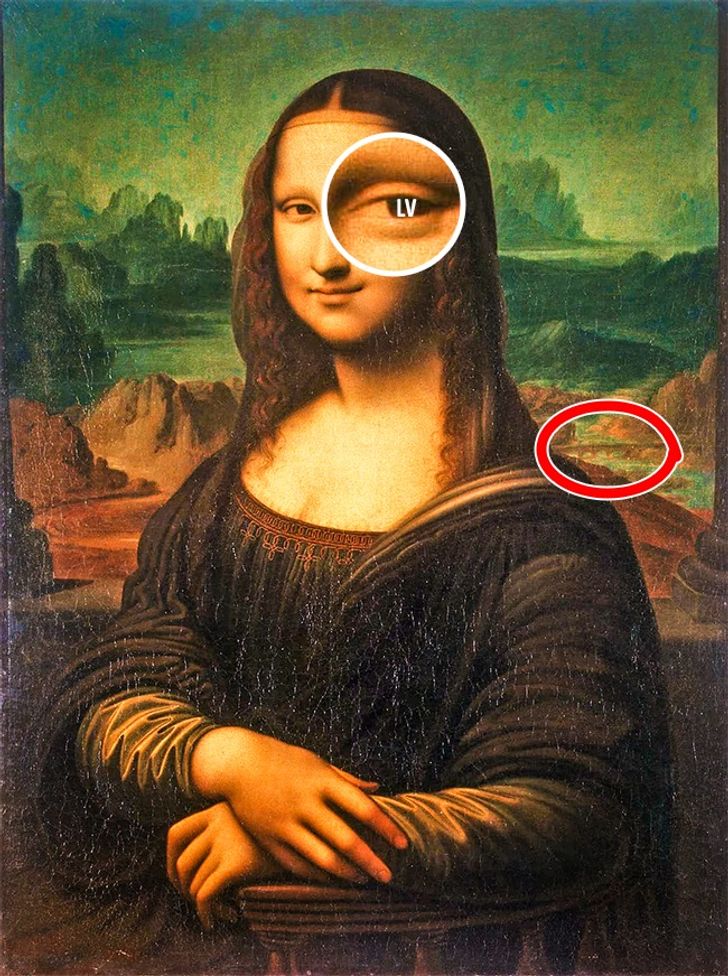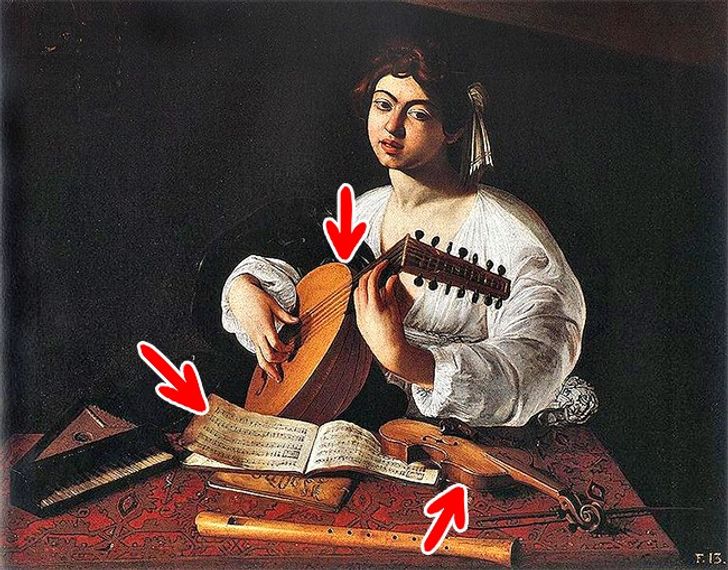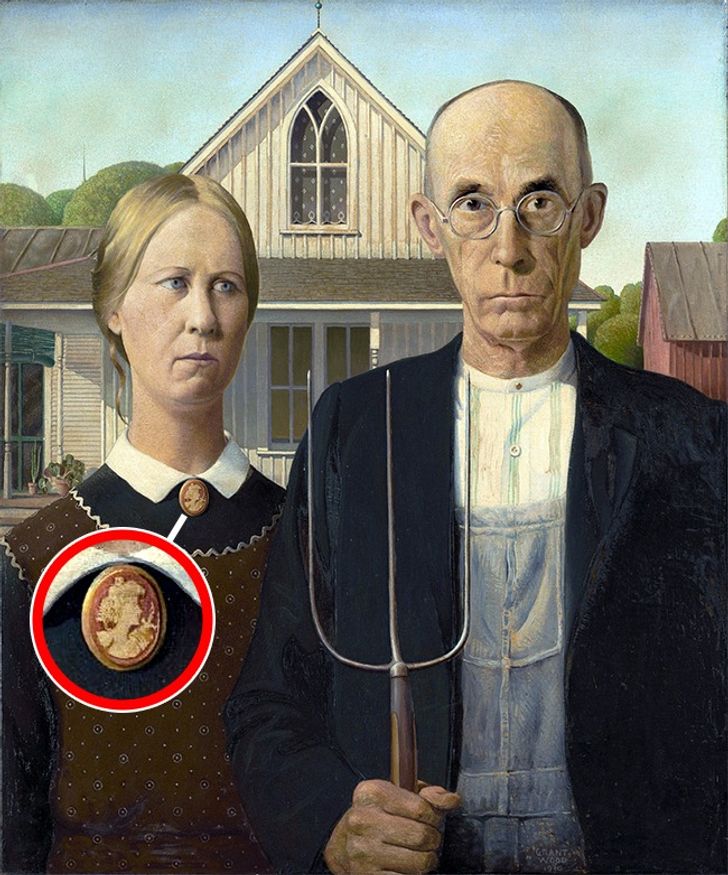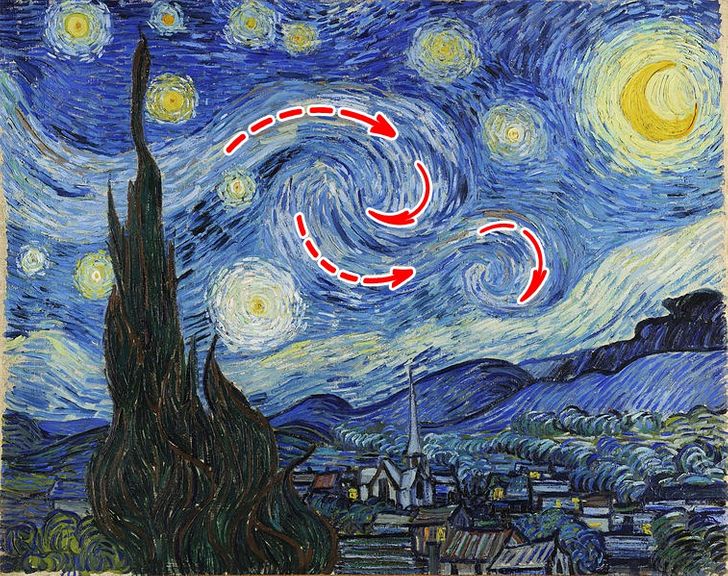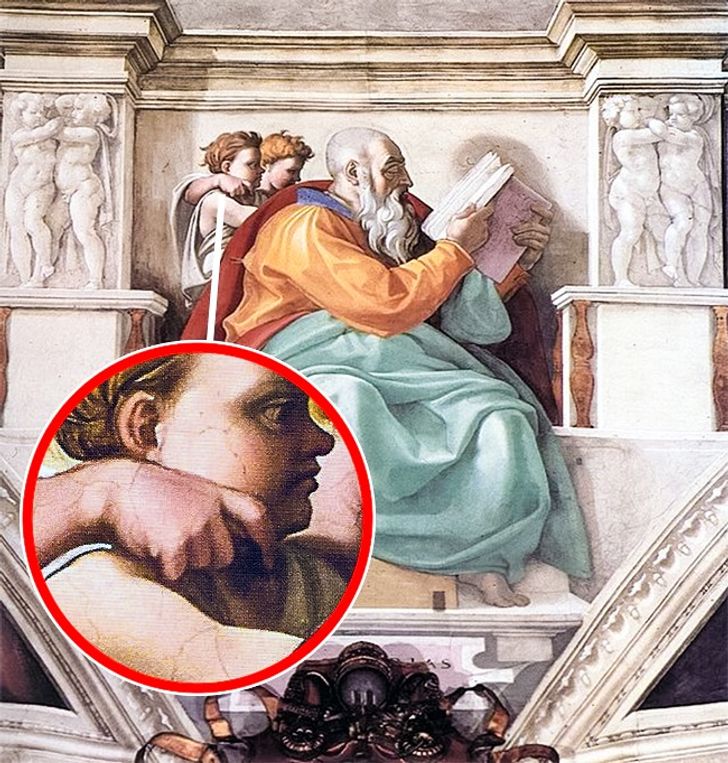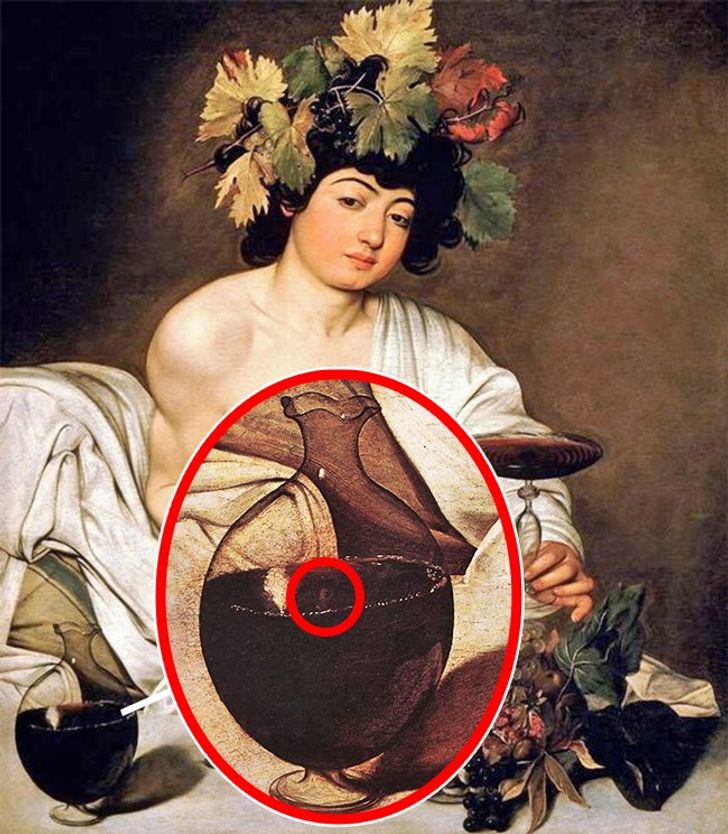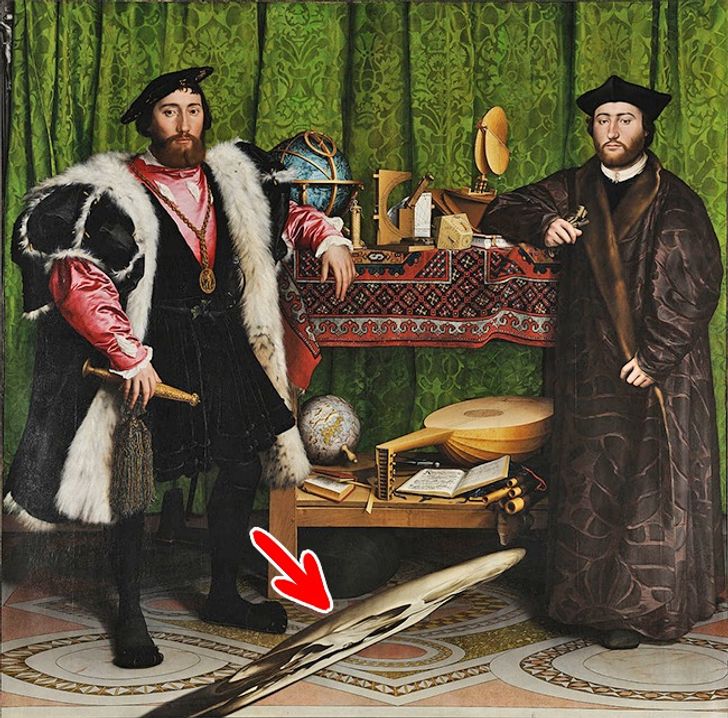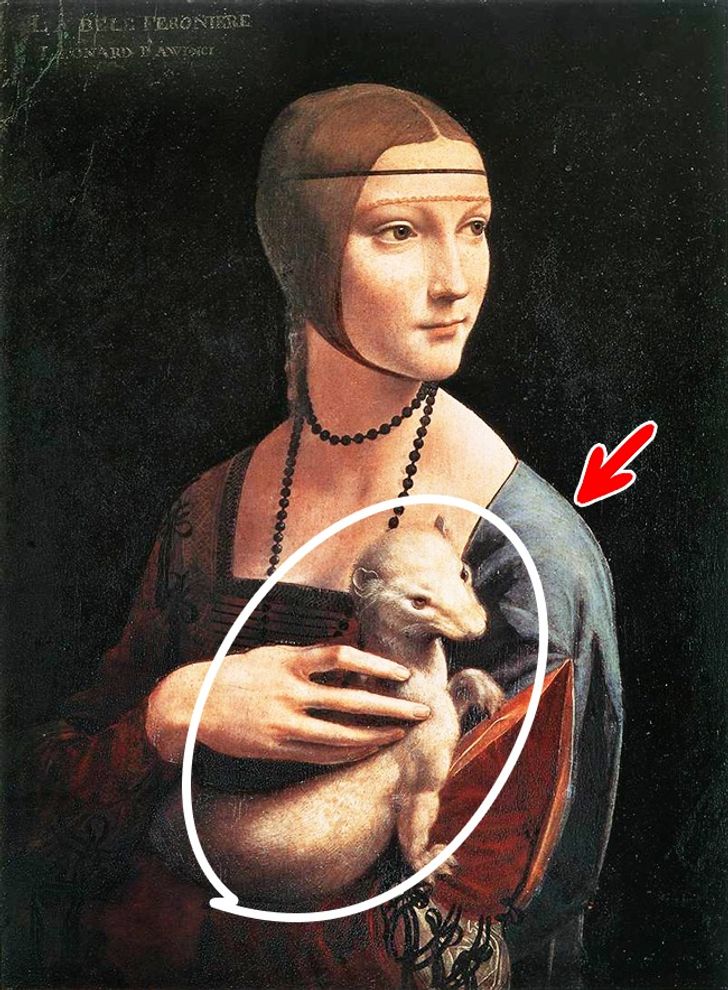Artists very often leave special messages in their works. But we are used to looking at paintings as a whole, without paying heed to seemingly insignificant details.
9. The whale that wasn’t
This very modest landscape has concealed the truth for 150 years. A restorer, cleaning the surface of the picture, found on it a painted whale, washed up on the shore. The artist Hendrick van Anthonissen decided to paint over it, thinking a work without a dead animal would be more popular with the audience.
8. The da Vinci code
Members of Italy’s National Committee for Cultural Heritage found the letters “LV” in the right eye of the Mona Lisa. They could indicate the name of the artist, Leonardo da Vinci. Another find is symbols in the bridge, appearing to be the number 72. It is believed that the bridge (destroyed in 1472) behind the woman’s left shoulder is in the Italian city of Bobbio. Perhaps this way Leonardo wanted to hint at the setting.
7. Male or Female?
For a long time, the person in this painting by Caravaggio was considered a woman. Only at the beginning of the 20th century did art critics see a young man in the lute player. A few signs indicate this: the notes are the bass part of Jacques Arcadelt’s “You know I love you and adore you,” as well as the lute and the violin, considered male instruments in Caravaggio’s time.
6. Persephone and Hades
Take a look at this brooch: it shows Persephone, the Greek goddess of harvest and queen of the underworld. According to legend, Persephone was kidnapped by Hades, and the pitchfork in the hands of the farmer is just like Hades’s trident. Grant Wood has scattered many details around: for example, the stitching on the man’s denim overall, the stripes on his shirt, the window frames, and even the plant in the background mimic the shape of the pitchfork.
5. Van Gogh’s turbulence
In 2004, scientists observed vortices of clouds, dust, and gas around a distant star. Interestingly, this phenomenon reminded them of The Starry Night by the Dutchman. After studying the painting, the researchers came to a conclusion: it can be argued that Van Gogh captured one of the most difficult concepts in physics and mathematics — turbulence — on canvas.
4. A fig sign to the Pope
The conflict between Pope Julius II and Michelangelo led to the fact that one of the angels near Prophet Zechariah in the Sistine Chapel mural (the prophet was based on Julius II), folded his fingers in a fig sign. This gesture was thought to be indecent, so people got the hint.
3. A face in a jug
Bacchus, one of the most famous paintings by Caravaggio, looks rather ordinary, but a group of experts managed to see something peculiar inside the lower left of the jug: a miniature self-portrait of the artist.
2. Life and death from different angles
The strange object placed in the foreground of The Ambassadors is a skull. Hans Holbein the Younger did a trick: when we look straight at the painting, we see a person immersed in a routine. Death now is almost an illusion not worth any attention. But at the “right” angle, death turns into the only reality, a reality that distorts the life we know.
1. Lady without an ermine
In the original version of the famous painting Lady With an Ermine, there was no ermine. Leonardo da Vinci drew the gray animal and the blue cloak later. For the final version, he even made the animal larger and colored it white. It is assumed that the lady in the picture is the mistress of Duke Ludovico Sforza, and he himself is depicted as an ermine. This animal was the symbol of Sforza’s house.
Bonus: a hidden Van Gogh self-portrait has been recently discovered
The National Galleries of Scotland have recently revealed a previously unknown self-portrait by Vincent van Gogh. The mysterious painting was discovered during an x-ray taken from a painting entitled Head of a Peasant Woman, for an upcoming exhibition. Hidden from view for over a century, the self-portrait is on the back of the canvas, covered by layers of glue and cardboard.
The x-ray shows a bearded man in a brimmed hat with a neckerchief loosely tied at the throat, fixing the viewer with an intense stare — and, to our general surprise, his famous left ear is clearly visible. Now conservators will begin the process of revealing the self-portrait, which is in an uncertain condition beneath layers of adhesive and cardboard, while preserving the original painting.
Who is your favorite painter or painting? Do you like visiting art exhibitions? Do you have a favorite art museum? Tell us in the comments below!
